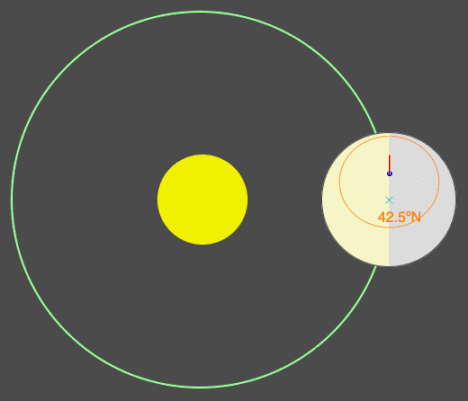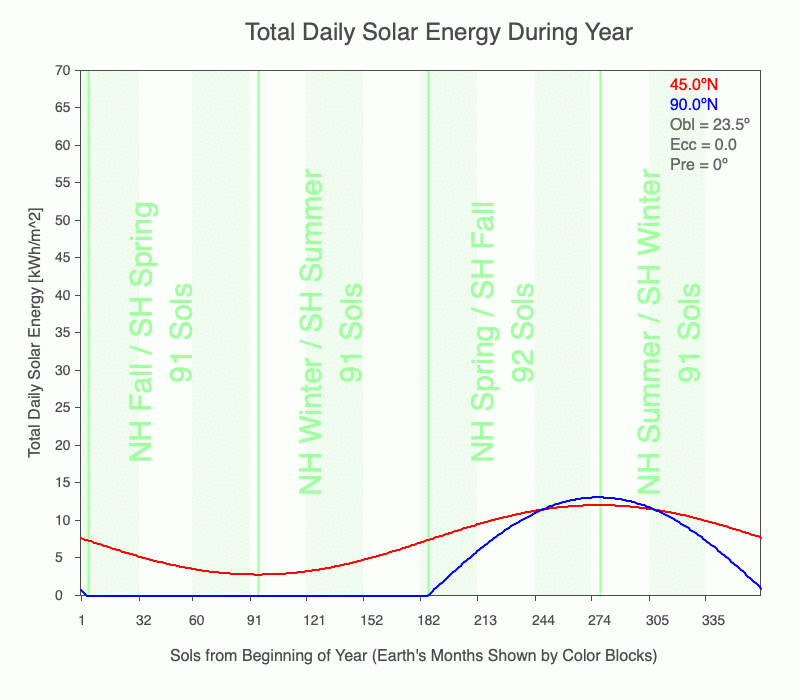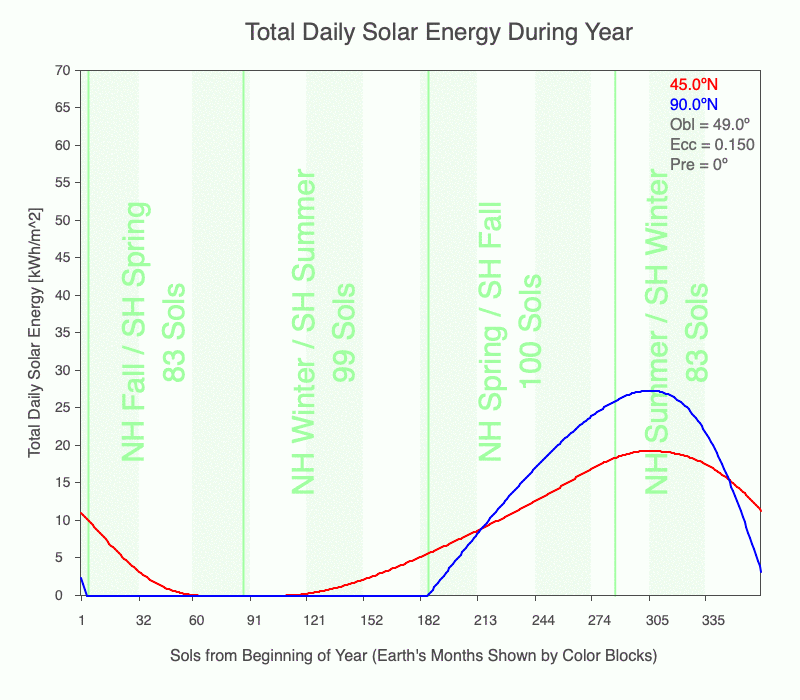Planet Precession
Precession is the gradual change in the orientation of the planet’s rotational axis (red line). Think of the wobble of a spinning top. The amount of tilt toward the sun doesn’t change; instead, the orientation of the axis of rotation changes. In the orbit animation, notice that the planet goes through the solstices and equinoxes without changing its position in orbit.
In the second animation of the seasonal patterns of total daily solar energy at 45ºN and 90ºN, changing precession changes the timing of the solstices and equinoxes during the year. The obliquity of the planet is 23.5º, like Earth’s, but the eccentricity is 0, so the orbit is perfectly circular. The magnitudes of the solar illumination at each latitude don’t change.

Animation as a planet’s precession changes from 0º to 360º.

Animation of the total daily solar energy received during the year at 45ºN and 90ºN as the precession changes from 0º to 360º. The planet has an obliquity of 23.5º, like Earth, but the eccentricity is 0.
Precession and the Intensity of Earth’s Illumination
When obliquity is 0º, precession can’t occur, but when both obliquity and eccentricity are non-zero, precession plays a role in changing the distribution of sunlight across the planet during its orbit. In the animation of a planet with an eccentricity of 49º and an eccentricity of 0.180, the illumination patterns change dramatically as precession changes.
Examples of how precession changes the timing of solstices with respect to the closest distance to the Sun (perihelion) and furthest (aphelion):
| Solstice | Location in Orbit | Season Duration | Temperature Anomaly |
| Winter | Perihelion | Shorter | Warmer |
| Winter | Aphelion | Longer | Colder |
| Summer | Perihelion | Shorter | Hotter |
| Summer | Aphelion | Longer | Milder |

An animation of total daily solar energy for a planet with an obliquity of 49º and an eccentricity of 0.180 as the precession changes from 0º to 360º. The total daily solar energy received throughout the year for 45ºN are in red and for 90ºN in blue.
Summary
Unlike obliquity and eccentricity, precession alone doesn’t affect the severity of seasonal temperatures. But if both obliquity and eccentricity are non-zero, precession changes the timing of solstices and aphelion/perihelion. In some cases, the seasonal temperature change is amplified, and other times, it is mitigated.
Continue Exploring the Impacts of Precession on a Planet’s Radiation Budget
Use the desktop app, Star-Planet Connection, to explore the planet’s illumination at any day during its orbit as you change precession. Download Mac or PC versions at the Software page.
Big Ideas
- Precession is the gradual change in the orientation of the planet’s rotational axis. The amount of tilt toward the sun doesn’t change; instead, the axis of rotation changes.
- Unlike obliquity and eccentricity, precession alone doesn’t affect the severity of seasonal temperatures.
- Precession changes the timing of solstices and equinoxes based on obliquity and the closest distance to the Sun (perihelion) and furthest (aphelion) due to an eccentric orbit.

0 Comments